Homophones Chapter Notes | English Olympiad for Class 3 PDF Download
What are Homophones?
Homophones are words that sound the same but have distinct spellings and meanings. Although their pronunciations are the same but their spellings and their meanings are not the same.
Let's use an example to understand better:

In the above-mentioned example, there are two different images which:
- are pronounced the same: TWO - TO
- have different spelling: TWO - TO
- have different meanings: TWO is the number 2 whereas TO is a preposition.
Such words are called homophones.
List of Homophone Examples
1. there / their
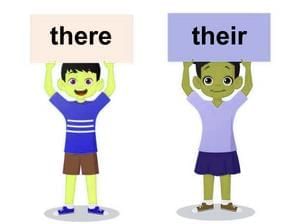
→ There: The book is over there.
→ Their: That's their dog.
2. your / you're
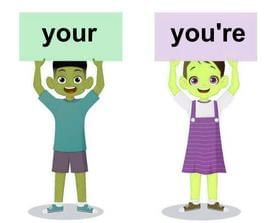
→ Your: Is this your backpack?
→ You're: You're my best friend.
3. its / it's
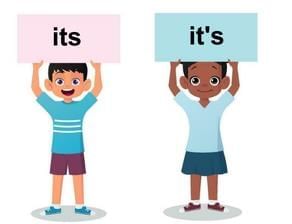
→ Its: The cat cleaned its fur.
→ It's: It's a beautiful day.
4. here / hear
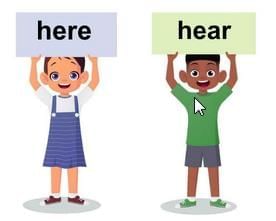
→ Here: I am here at the park.
→ Hear: Can you hear the birds singing?
5. flower / flour

→ Flower: I picked a beautiful flower.
→ Flour: We need flour to make pancakes.
6. write / right

→ Write: Please write your name.
→ Right: Turn right at the next intersection.
7. sea / see

→ Sea: The sea is so vast.
→ See: I can see the mountains.
8. pair / pear
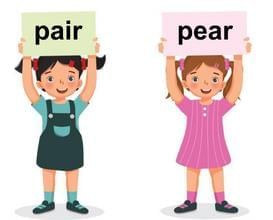
→ Pair: I have a pair of socks.
→ Pear: I like to eat a juicy pear.
9. blue / blew
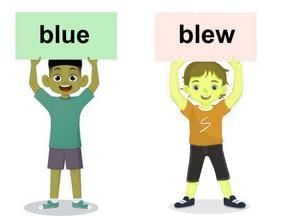
→ Blue: The sky is so blue.
→ Blew: The wind blew the leaves away.
10. night / knight
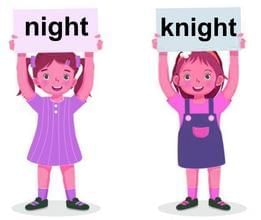
→ Night: The stars shine at night.
→ Knight: The knight protected the castle.
11. break / brake

→ Break: Don't break the toy.
→ Brake: Use the brake to stop the bicycle.
12. bare / bear

→ Bare: His feet were bare.
→ Bear: A bear lives in the forest.
|
35 videos|57 docs|97 tests
|
FAQs on Homophones Chapter Notes - English Olympiad for Class 3
| 1. What are homophones and how do they work in the English language? |  |
| 2. Can you provide some examples of homophones commonly used in everyday conversation? |  |
| 3. How can understanding homophones help improve language skills for students? |  |
| 4. Are there any strategies for teaching homophones effectively to young learners? |  |
| 5. Why is it important to differentiate between homophones in writing? |  |
















